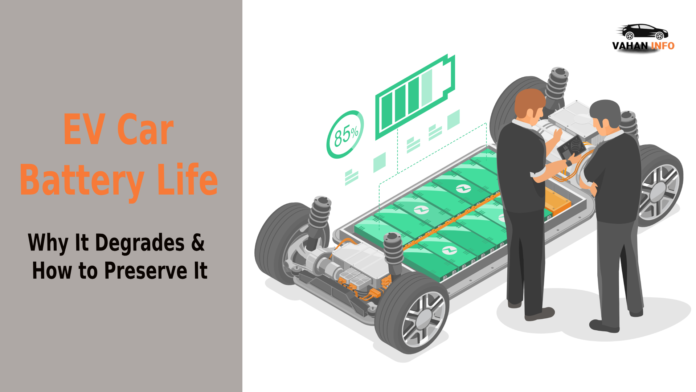Over time, EV car batteries degrade, leading to reduced driving range and performance. Factors like charging habits, extreme temperatures, and battery cycles contribute to this gradual wear. While degradation is inevitable, proper maintenance and smart charging strategies can slow down the process and extend your EV battery’s lifespan. In this guide, we’ll explain why EV car batteries degrade over time and how to slow it down with simple, effective practices.
Key Points
- What Causes EV Battery Degradation?
- Factors That Speed Up Battery Wear
- How to Slow Down EV Battery Degradation
- The Role of Battery Chemistry
- Real-World Tips from EV Owners
What Causes EV Battery Degradation?
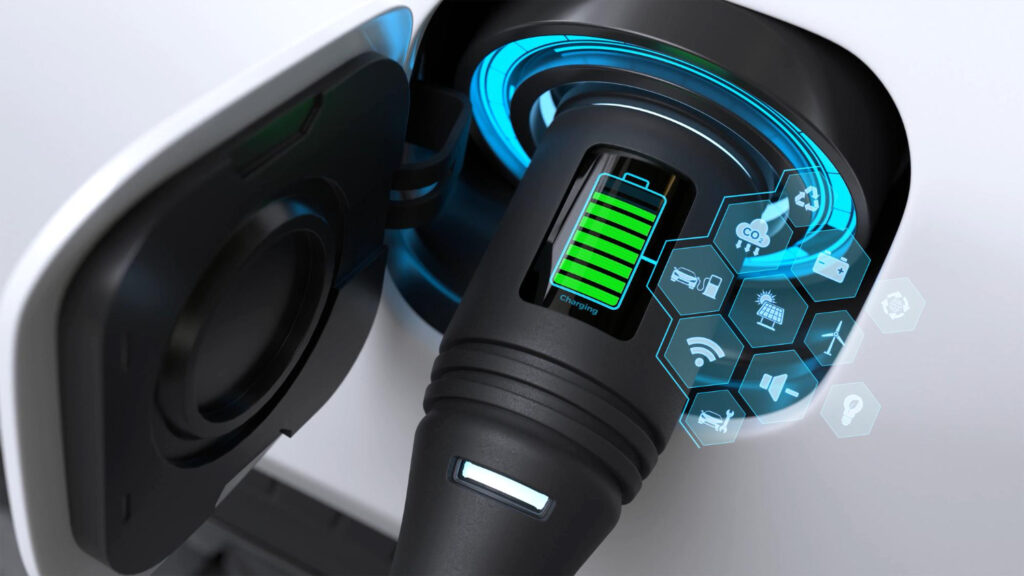
EV batteries, usually lithium-ion, are the heart of your electric car. But like anything that works hard, they wear out over time. Every time you charge and discharge it, tiny changes happen lithium ions move back and forth between the anode and cathode, and over time, this stresses the materials. Think of it like bending a paperclip repeatedly; eventually, it weakens and snaps. In batteries, this shows up as reduced capacity meaning your EV won’t go as far on a single charge.
Another sneaky factor is the solid electrolyte interphase (SEI) layer. It forms on the anode to protect it, but as it grows thicker with use, it traps some lithium, making less available for power. Temperature swings, overcharging, and even just sitting unused for too long can make this worse. It’s a natural process, but how you treat your battery can speed it up or slow it down.
Factors That Speed Up Battery Wear
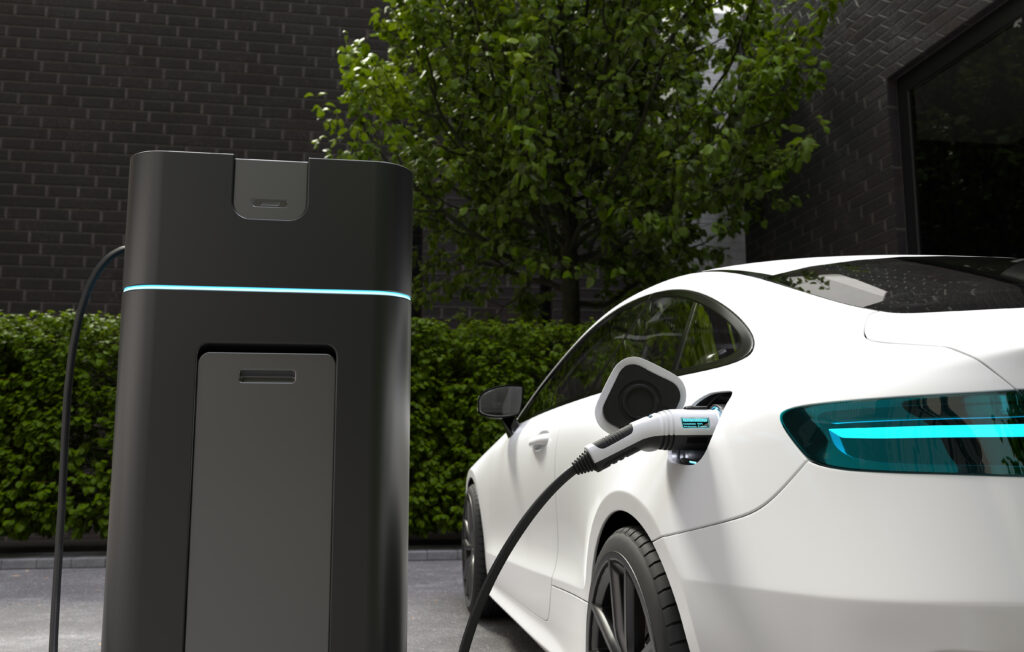
What’s stressing out your EV battery:
- High Temperatures: Heat is a battery’s worst enemy. Parking in the blazing sun or fast-charging too often (which generates heat) can cook the cells, breaking down their structure faster.
- Overcharging or Deep Discharging: Charging to 100% or letting it drop to 0% puts extra strain on the battery. It’s like overstuffing or completely emptying a backpack it wears out the straps!
- Fast Charging: Sure, it’s convenient, but DC fast chargers push a lot of power in quickly, heating things up and stressing the battery’s internals.
- Age and Time: Even if you barely drive, the battery’s chemicals degrade naturally over years. It’s called calendar aging kind of like how milk goes bad even if you don’t open it.
- Heavy Use: Constantly flooring it or towing heavy loads drains the battery fast, accelerating wear.
How to Slow Down EV Battery Degradation
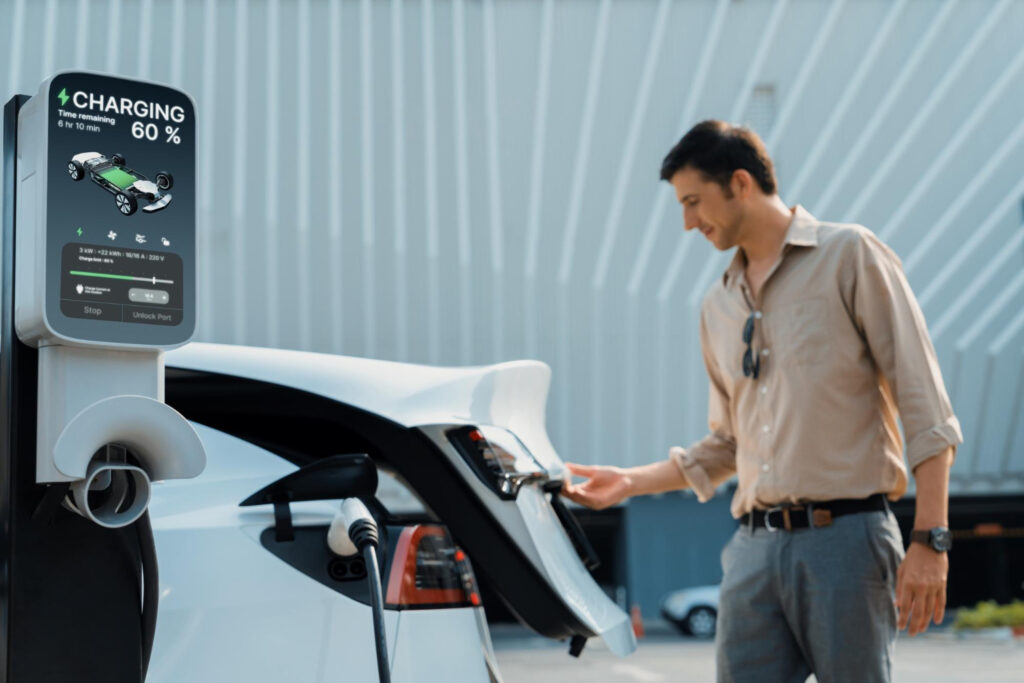
Here’s how to baby your battery and keep it healthy:
- Charge Smart: Stick to 20-80% charge range for daily use. Most EVs let you set a charge limit use it. Full charges are fine for long trips, but don’t make it a habit.
- Avoid Extreme Temps: Park in the shade or a garage, especially in summer. In winter, precondition the battery (warm it up via the car’s system) before charging.
- Limit Fast Charging: Use Level 2 chargers (slower, gentler) when you can. Save fast chargers for when you’re in a pinch.
- Drive Smoothly: Ease off the accelerator and avoid aggressive driving. It’s not just good for the battery it saves energy too.
- Store It Right: If you’re not driving for a while, keep the charge around 50-60% and store it in a cool, stable spot.
The Role of Battery Chemistry
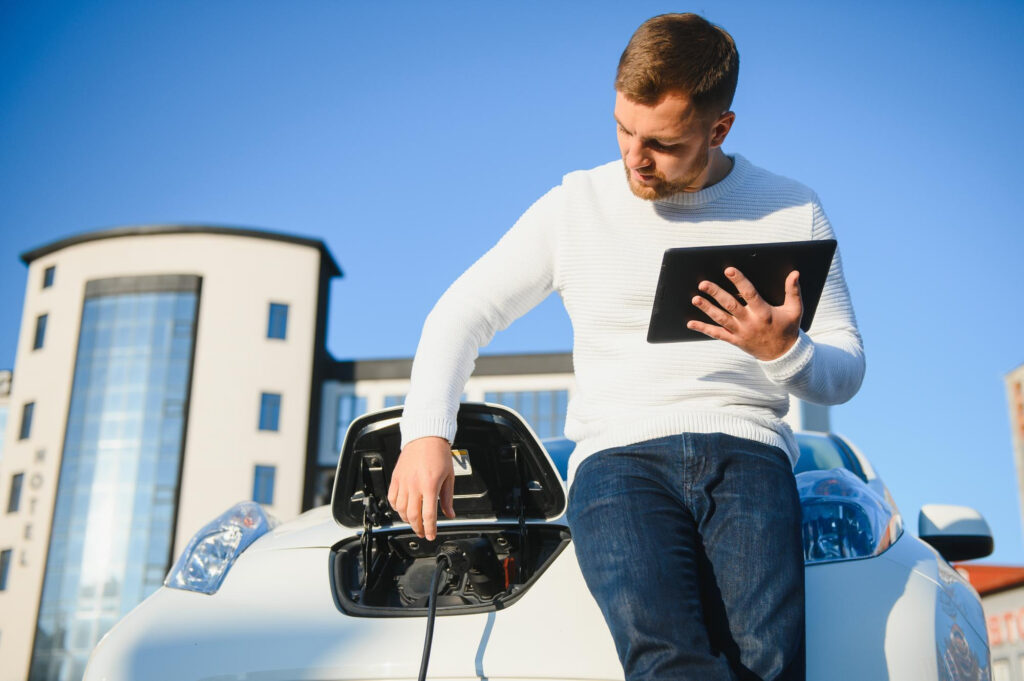
Not all EV batteries are the same, and their chemistry plays a huge role in how they age. Most EVs use lithium-ion batteries, but the flavors vary:
- NMC (Nickel Manganese Cobalt): Common in Teslas and others, these offer high energy density (more range) but can degrade faster under heat or overcharging.
- LFP (Lithium Iron Phosphate): Found in some newer models like the Tesla Model 3 Standard Range, these are tougher and last longer but pack less energy per pound.
LFP batteries, for example, can handle full charges better and degrade slower sometimes lasting over 3,000 cycles versus 1,500 for NMC. Manufacturers are always tweaking recipes, adding stuff like silicon to boost performance, but the trade-off is usually cost or stability. Knowing your EV’s battery type can help you tailor your care routine.
Real-World Tips from EV Owners
I’ve chatted with some EV folks (and peeked at online forums), and here’s what’s worked for them:
- Precooling is a game-changer: One Tesla owner swears by turning on the AC via the app before fast charging in summer it keeps the battery cooler.
- Partial charges rule: A Leaf driver said sticking to 70% charge doubled their battery’s lifespan compared to a friend who always went to 100%.
- Winter hack: A Bolt owner in Canada plugs in overnight with a timer to finish charging just before driving keeps the battery warm without overdoing it.
These little tricks aren’t in the manual but come from real experience. Experiment and see what fits your routine!
Conclusion
While EV Car Batteries Degrade naturally over time, you can significantly slow down the process with mindful habits. Avoid frequent fast charging, maintain an optimal charge level (20-80%), and protect your car from extreme temperatures. Regular software updates and efficient driving habits also play a crucial role in battery longevity. By following these steps, you can maximize your EV battery’s lifespan and maintain its performance for years to come.
Frequently Asked Questions (FAQs)
Q1. How long do EV batteries typically last?
Most EV batteries are built to last 8-15 years or 100,000-200,000 miles, depending on use and care. Many come with warranties for that range too!
Q2. Does fast charging ruin my battery?
It doesn’t ruin it, but frequent fast charging can speed up degradation due to heat and stress. Use it sparingly for best results.
Q3. Can I replace an EV battery if it degrades too much?
Yes, Replacement is possible, though costly around RS 40,000-RS 1,20,000 depending on the model. Prices are dropping as tech improves, though.
Q4. Is it bad to leave my EV plugged in all the time?
Not really modern EVs have systems to stop overcharging. Just don’t let it sit at 100% for weeks; aim for 50-80% if parked long-term.
Q5. Do cold climates hurt EV batteries?
Cold slows chemical reactions, reducing range temporarily, but it’s less damaging than heat. Preheat the battery before charging to help.


